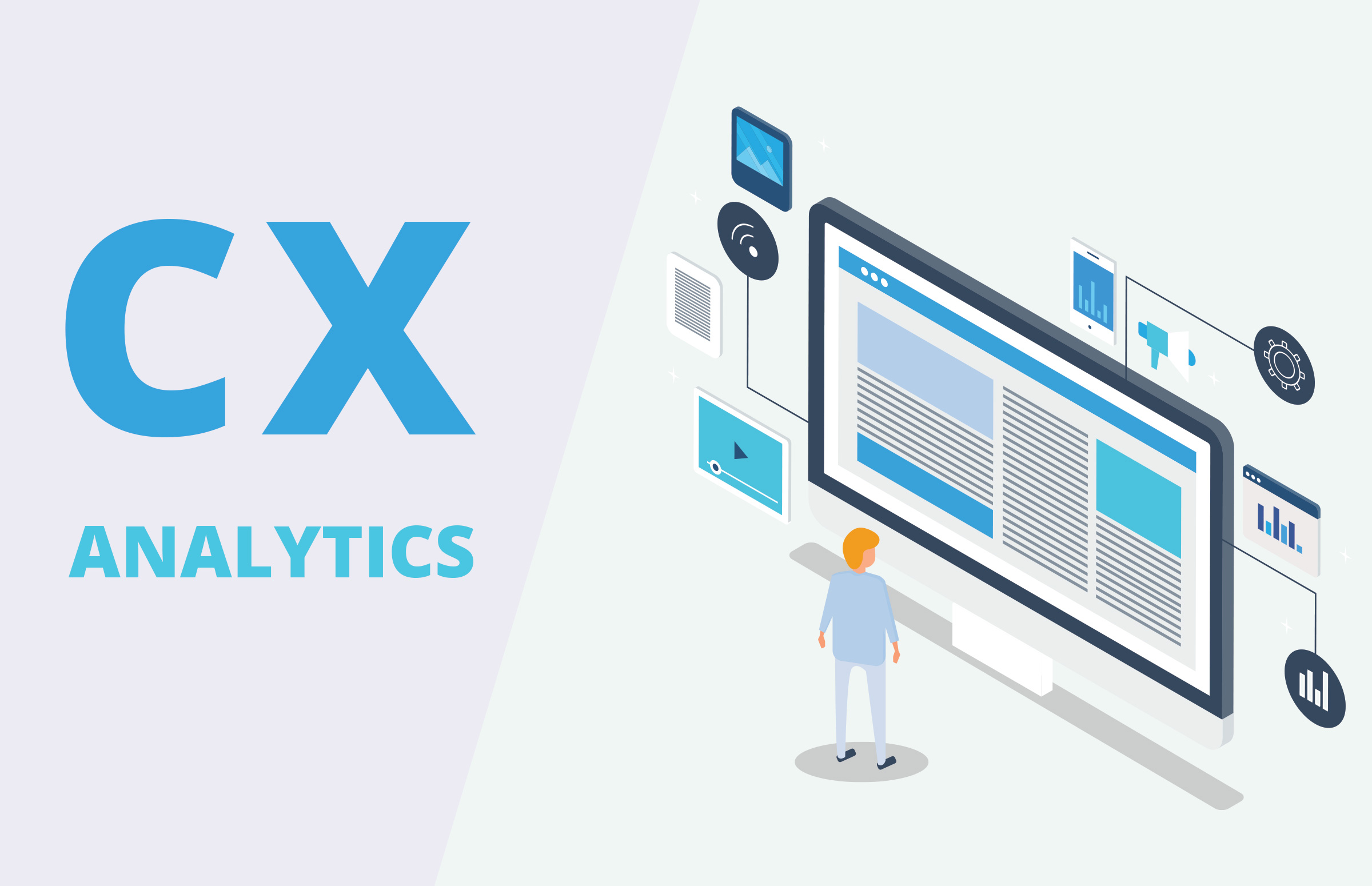In today’s competitive business landscape, understanding and improving customer experience has become paramount for organizations aiming to thrive. Customer experience analytics plays a pivotal role in deciphering the intricacies of customer interactions and sentiments towards a brand or product. This article delves into the realm of customer experience analytics, exploring its significance, methodologies, tools, implementation strategies, and future trends.
Importance of Customer Experience Analytics

Customer experience analytics encompasses the systematic analysis of customer feedback, interactions, and behavior across various touchpoints. It provides valuable insights into customer preferences, pain points, and satisfaction levels. By leveraging data-driven approaches, businesses can identify areas for improvement, optimize processes, and enhance overall customer satisfaction.
Understanding Customer Experience Metrics
1. Net Promoter Score (NPS)
NPS measures the likelihood of customers to recommend a product or service to others. It categorizes customers into promoters, passives, and detractors, offering a holistic view of customer advocacy and loyalty.
2. Customer Satisfaction Score (CSAT)
CSAT gauges the satisfaction levels of customers based on their recent interactions with a brand. It typically involves post-purchase surveys or feedback mechanisms to assess customer sentiment.
3. Customer Effort Score (CES)
CES evaluates the ease of conducting business with a company. It focuses on minimizing customer effort in completing tasks or resolving issues, fostering loyalty and retention.
Customer Experience Analytics Tools
In the era of digital transformation, numerous tools and technologies facilitate comprehensive customer experience analytics:
- CRM Systems: Customer Relationship Management (CRM) platforms centralize customer data, enabling businesses to track interactions, personalize communications, and nurture relationships effectively.
- Surveys and Feedback Platforms: Platforms like SurveyMonkey, Typeform, and Qualtrics empower businesses to collect structured customer feedback and insights at various touchpoints.
- Social Media Listening Tools: Tools such as AIM Insights, Sprout Social, and Brandwatch enable organizations to monitor social media conversations, track brand mentions, and analyze sentiment to gain deeper insights into customer perceptions.
Implementing Customer Experience Analytics
Successful implementation of customer experience analytics entails the following key steps:
- Setting Clear Objectives: Define specific goals and KPIs aligned with business objectives and customer expectations.
- Data Collection and Analysis: Employ robust data collection mechanisms to gather customer feedback, behavior, and sentiment data across diverse channels.
- Actionable Insights and Decision Making: Translate raw data into actionable insights to drive informed decision-making and continuous improvement initiatives.
Benefits of Implementing Customer Experience Analytics
- Enhanced Customer Satisfaction and Loyalty
- Improved Operational Efficiency and Cost Reduction
- Better Targeting and Personalization
- Competitive Advantage and Differentiation
Challenges
Despite its benefits, CX analytics poses several challenges, including data integration complexities, privacy concerns, and the need for cross-functional collaboration and alignment.
Best Practices for Effective CX Analytics
- Foster a Customer-Centric Culture
- Embrace Data Privacy and Security Measures
- Continuously Monitor and Iterate Strategies
- Encourage Cross-Functional Collaboration
Case Studies of Record-Breaking Customer Experience Analytics
- Amazon’s Personalization Engine
Amazon has set a new standard in customer experience by leveraging advanced data analytics to personalize the shopping experience. Through its recommendation system, Amazon analyzes customer purchase behavior, browsing history, and feedback to suggest products that users are likely to buy. The result? Amazon claims that its recommendation engine accounts for 35% of its total sales. This personalized approach not only boosts sales but also enhances customer satisfaction and loyalty. The seamless integration of customer data, AI, and machine learning has turned Amazon into a world leader in customer experience, making it a model for others to follow. - Airbnb’s Continuous Improvement through Customer Feedback
Airbnb utilizes customer experience analytics to refine every aspect of its platform, from listing descriptions to customer service. Through feedback collected from surveys, reviews, and social media, Airbnb discovered pain points in the booking and user interface process. The company used this data to make improvements in search algorithms, listings accuracy, and communication between hosts and guests. In fact, after implementing these changes, Airbnb saw a 20% increase in repeat bookings within six months, demonstrating the power of customer-driven insights to boost loyalty and satisfaction.
Influential Tweets and Quotes
- Jeff Bezos, Founder of Amazon
“We see our customers as invited guests to a party, and we are the hosts. It’s our job every day to make every important aspect of the customer experience a little bit better.”
This quote reflects Amazon’s commitment to continually enhancing customer experience by refining touchpoints and creating a seamless, enjoyable experience. Bezos’ customer-centric philosophy drives Amazon’s success and serves as an example for other businesses aiming to improve their CX strategies. - Richard Branson, Founder of Virgin Group
“The key is to set realistic customer expectations and then not to just meet them, but to exceed them – preferably in unexpected and helpful ways.”
Branson’s emphasis on surpassing customer expectations aligns with the role of CX analytics in understanding and exceeding customer desires. His approach highlights the importance of not only responding to customer feedback but also using data-driven insights to anticipate future needs and innovate accordingly. - Shep Hyken, Customer Service Expert
“Customers will never love a company until the employees love it first.”
Hyken underscores the internal alignment required for exceptional customer experiences. By using CX analytics to understand both customer and employee experiences, companies can create an environment where everyone is invested in delivering outstanding service, enhancing the overall customer journey.
Record-Breaking CX Implementations
- Netflix’s Predictive Analytics and Customer Retention
Netflix leverages predictive analytics and machine learning algorithms to anticipate customer preferences based on viewing habits, reviews, and ratings. By offering personalized recommendations, Netflix saw a 75% increase in content engagement. This data-driven personalization significantly reduces churn rates and keeps Netflix at the forefront of the entertainment industry, showing how deep analytics can lead to superior customer retention. - Zappos’ Renowned Customer Service
Zappos has long been recognized for its exceptional customer service, driven largely by customer experience analytics. By tracking customer interactions and feedback in real-time, Zappos can provide personalized responses and proactive support. Their approach is so successful that in one case, a customer service call lasted 10 hours and 43 minutes, demonstrating the company’s commitment to truly understanding and serving its customers. This dedication to customer-centric service has helped Zappos achieve consistently high NPS and CSAT scores.
Future Trends
- Predictive Analytics and Machine Learning
- Omnichannel Customer Engagement
- Hyper-Personalization and AI-driven Insights
Conclusion
In conclusion, CX Analytics is a critical tool for organizations seeking to gain a competitive edge by delivering exceptional customer experiences. By leveraging data-driven insights, companies can optimize processes, foster customer loyalty, and drive sustainable growth.
Experience the power of advanced analytics and unlock actionable insights to elevate your customer experience strategy. Request a demo from AIM Technologies today!
FAQs
What is the significance of CX analytics in the digital age?
- CX analytics enables businesses to understand customer preferences, enhance satisfaction levels, and drive loyalty in an increasingly competitive landscape.
How can organizations overcome challenges in implementing CX analytics?
- Organizations can overcome challenges by fostering a culture of data-driven decision-making, investing in robust technologies, and fostering cross-functional collaboration.
What role does data privacy play in CX analytics?
- Data privacy is critical in customer experience analytics to ensure the confidentiality and security of customer information and foster trust and transparency.
How does CX analytics contribute to business growth and profitability?
- By improving customer satisfaction, loyalty, and retention rates, customer experience analytics drives revenue growth, reduces churn and enhances profitability.
What are some emerging trends in CX analytics?
- Emerging trends include predictive analytics, omnichannel engagement, and hyper-personalization, enabling organizations to anticipate customer needs and deliver tailored experiences effectively.




